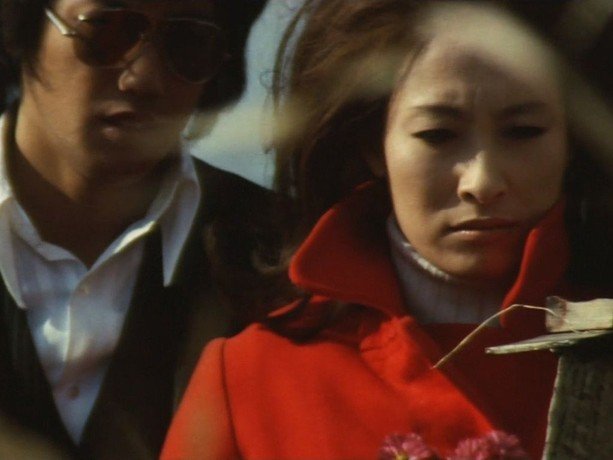
Isako goes back to her rural village in the middle of nowhere with her younger lover, Tetsuo, as the Yakuza are after him and she thinks it’s a good place to stay hidden in. While Tetsuo tries to fit into the new lifestyle, he has to deal with sharing a dilapidated shack together in rough weather conditions. Not only that, but Isako also discovers that she would not be able to get her father and brother’s insurance money, and to add to even more misfortunes, she is forced to work in a local hostess bar. Tetsuo instead, becomes friends with Yuki, a local blind girl who shows him affection. Additionally, he fishes with an old man named Tamezo, whose son was in a relationship with Isako. The men in the village leave during the year to get work, making Tamezo easily irritated. Over time, Tetsuo enjoys living in the village while Isako struggles to adjust to it.
In his coaxing tone, Koichi Saito narrates a rather horrifying story which is social in way of identifying characters who are unable to leave the premises even when they want to do so. The reasons each one has actually form one of the most interesting aspects of the movie, and are also the main source of the plethora of sociopolitical comments that appear throughout the movie. Isako exclaims that she is there because she loves Tetsuo, and this is the very same reason why she has put an end to investing so much time and emotional energy in him. While Tetsuo loves her greatly, he does not feel the burden of an unexpected loss when he cannot be reached. In her death like state, she will be able to avenge herself and her family, yes enslaving herself for the monetary gains she is after will aid in that. The circumstances under which the money is acquired add to the richness of the comment, while the role she plays allows for a greater interpretation of the struggle.
To say that those who are in love and those who lack money have the same consequences is a rather disheartening statement, which is in fact the way the entire film functions over the duration of its runtime.
However, Tetsuo is reluctant to go outside because of his history and connections to the yakuza, but eventually, finds Yuki, a woman in trouble who could not leave. He also meets Tamezo, who acts like a father figure, but is emotionally scarred, as someone who could not. The fact that Tetsuo endures his most serious adversity the moment he makes a decision to settle down in a place is also rather pessimistic. Saito appears to be saying that any decision to remain there is tantamount to a curse, and to worse, all the people who drowned in the ocean were heading for the same bad decision. Finally, the fact that the residents appear to have a strong reservation and contempt for all strangers, including those who they derisively refer to as tourists, adds to the general pessimistic narrative of these societies, in this case, unfamiliar and isolated ones.
How Isako’s life develops could be regarded as a what if situation what if she had decided to remain there and this is arguably one of the more intelligent parts of the story. How her life develops and finishes in that part of the world is in any case quite a different commentary in the same line as that one.
As stated above, the sound of the shamisen is one of the fundamental aspects of the story, which together with the music controls the rhythm of the film, which is what Saito tried to achieve in each and every episode, and further enhances it with strong tension.
Contrary to a lot of ATG productions, there is not much of experimentation here both in terms of the story or cinematographically with music being the most pronounced feature is built. That, however, does not imply that the production values are low. Quite the opposite, Noritaka Sakamoto’s camera work is commendable throughout the film and adds a sense of gloomy realism into the movie along with the distorted colors and the sea’s waves giving it an atmosphere that is pure and paradoxically, fatalistic. Work also about sound was done very well, especially taking into account the fact how well it is situated in the specified, invariably windy place. Tomoyo Oshima’s editing is equally high quality and that comes as no surprise because the combination of story and visuals V exceeds the original modest expectation.
Kyoko Enami does a stunning job, and she is the one who surprises the audience in the first scene wearing a red coat doing the accent really well, as much as her stale romance with Tetsuo. Interesting is Oda Akira in the latter role who is able to quite skillfully portray his evolution while emphasizing the various facets of his make-up. Mihoko Nakaga as Yuki plays the in love girl well, while Ko Nishimura as Tamezo sometimes has more appearance than desired with his cantankerousness.
“Tsugaru Folk Song” is one of the most easy to understand ATG films but at the same time it is one of the best of its kind a true gem.
For more movies like Tsugaru Folk Song (1973) visit solarmovie







